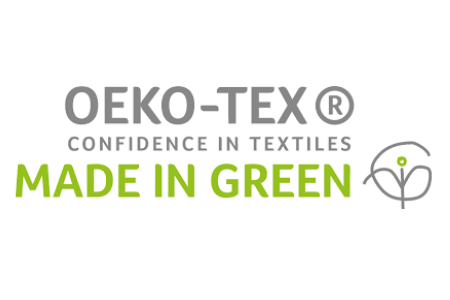
Oeko-Tex enlarges its sustainability label
YarnsandFibers News Bureau 2020-01-13 07:01:47 – SwitzerlandTesting and certification organisation Oeko-Tex's Made in Green sustainability label now includes leather products under newly updated guidelines which come fully into effect in April.
Oeko-Tex says its guidelines, including test criteria and limit values, have been updated to bring them into line with the requirements of consistent consumer protection and the sustainability of textiles and leather products.
Following a transition period, all of the new regulations will come fully into effect on 1st April. The expansion of the Made in Green label to include leather products follows the addition of leather to the organisation's STeP certification last year.
Leather articles rated Made in Green will be tested for harmful substances in accordance with the Leather Standard label and will have to be produced in environmentally-friendly facilities in socially-acceptable workplaces, in accordance with STeP.
Consumers will be able to track leather goods, such as clothing, shoes and furniture, using a unique product ID or a specific QR code on the label to identify the countries and production facilities in which they were produced.
To monitor compliance, Oeko-Tex also conducts on-site checks of production facilities with trained auditors. Made in Green has been rated by Greenpeace as one of the most stringent labels on the market.
Other changes to Oeko-Tex guidelines include the inclusion of carcinogenic N-nitrosamines and N-nitrosables substances in the organisation's Standard 100 and Leather Standard labels, following a year of observation.
The herbicide glyphosate and its salts have also been included in the limit value catalogue for the Standard 100 certificate. Specific limit values for the total content of the toxic heavy metals arsenic and mercury have also been defined in both the Standard 100 and Leather Standard.
Oeko-Tex says the stringent requirements for residues in textile materials will lead to an overall lower impact on the environment, workers and consumers.
The organisation has also revealed details of new substances it will be observing in 2020, based on the latest scientific findings and conformity with precise specifications.
This primarily concerns newly classified SVHC (substances of very high concern), which, have been identified as particularly hazardous by the European Union's REACH (Registration, Evaluation, Authorisation and Restriction of Chemicals) regulation.
Oeko-Tex will also be examining substances from the group of arylamines, as well as various dyes, pesticides and perfluorinated compounds.
Also from 1st April, the Oeko-Tex's Detox to Zero service will form an obligatory part of the STeP certificate to ensure safe chemical handling and wastewater testing in 'wet' textile and leather plants which use large quantities of water and chemicals.
This will bring STeP into line with the Zero Discharge of Hazardous Chemicals (ZDHC) initiative's Manufacturing Restricted Substance List (MRSL).
Courtesy: Eco Textile News
Market Intelligence
Ask for free sample Report

experience
Customer Base
dedicated team
Countries Served Worldwide









